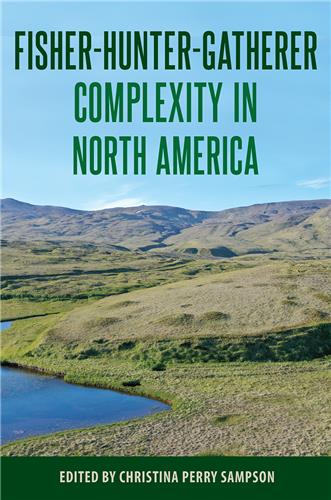Focusing on small-scale societies in saltwater environments, this volume explores the development of seafaring technology and examines how watercraft have served as groundbreaking innovations throughout human history.
Society and Ecology in Island and Coastal Archaeology
Edited by Victor D. Thompson and Scott M. FitzpatrickVictor D. Thompson
vdthom@uga.edu
Scott M. Fitzpatrick
smfitzpa@uoregon.edu
There are 10 books in this series.
Please note that while you may order forthcoming books at any time, they will not be available for shipment until shortly before publication date
This volume presents a global array of case studies on the management of shipwreck sites in intertidal zones, including strategies for conservation, archaeological research, and public outreach focused on such vulnerable sites.
This volume explores the impacts humans have made on island and coastal ecosystems and the ways these environments have adapted to anthropogenic changes over the course of millennia.
This book explores the forms and trajectories of social complexity among fisher-hunter-gatherers who lived in coastal, estuarine, and riverine settings in pre-Columbian North America.
In this volume, contributors apply human behavioral ecology theoretical models to coastal environments around the globe and to the use of coastal resources by past human societies, showing how researchers can gain insights about human behavior in these settings.
This volume details how new theories and methods have recently advanced the archaeological study of initial human colonization of islands around the world, including in the southwest Pacific, the Mediterranean, the Caribbean, and Southeast Asia.
Maritime Communities of the Ancient Andes examines how settlements along South America’s Pacific coastline played a role in the emergence, consolidation, and collapse of Andean civilizations from the Late Pleistocene era through Spanish colonization. Providing the first synthesis of data from Chile, Peru, and Ecuador, this wide-ranging volume evaluates and revises long-standing research on ancient maritime sites across the region.
Using archaeology as a tool for understanding long-term ecological and climatic change, this volume synthesizes current knowledge about the ways Native Americans interacted with their environments along the Atlantic Coast of North America over the past 10,000 years.
The islands of Alta and Baja California changed dramatically in the centuries after Spanish colonists arrived. Native populations were decimated by disease, and their lives were altered through forced assimilation and the cessation of traditional foraging practices. Overgrazing, overfishing, and the introduction of nonnative species depleted natural resources severely. Most scientists have assumed the islands were also relatively marginal for human habitation before European contact, but An Archaeology of Abundance reassesses this long-held belief, analyzing new lines of evidence suggesting that the California islands were rich in resources important to human populations.
The Powhatan Landscape breaks new ground by tracing Native placemaking in the Chesapeake from the Algonquian arrival to the Powhatan's clashes with the English. Martin Gallivan details how Virginia Algonquians constructed riverine communities alongside fishing grounds and collective burials and later within horticultural towns. Ceremonial spaces, including earthwork enclosures within the center place of Werowocomoco, gathered people for centuries prior to 1607. Even after the violent ruptures of the colonial era, Native people returned to riverine towns for pilgrimages commemorating the enduring power of place.











